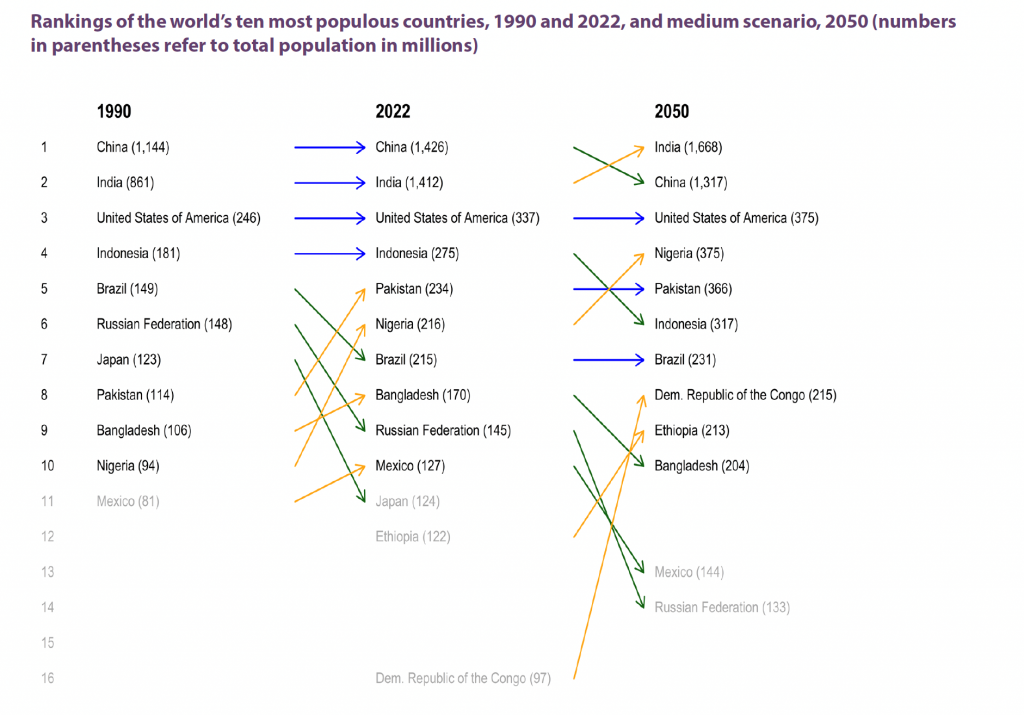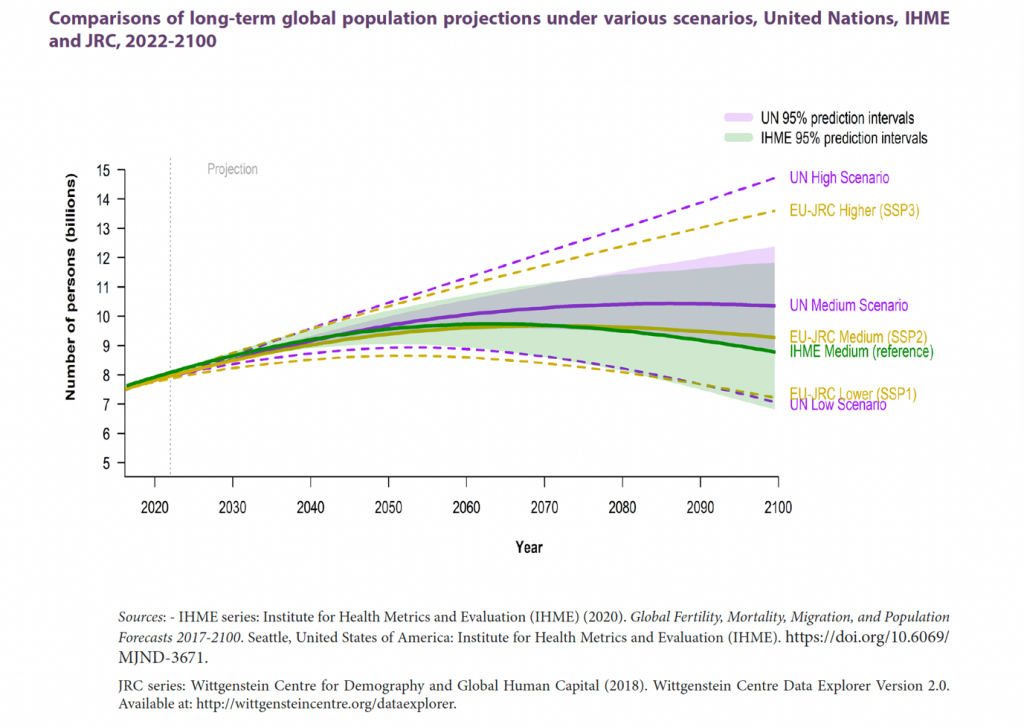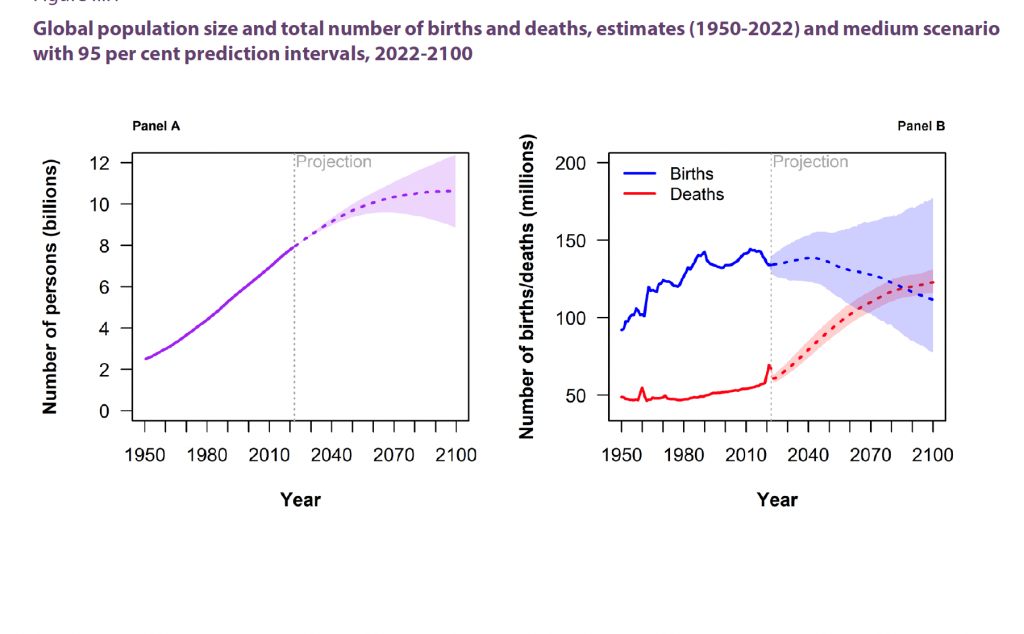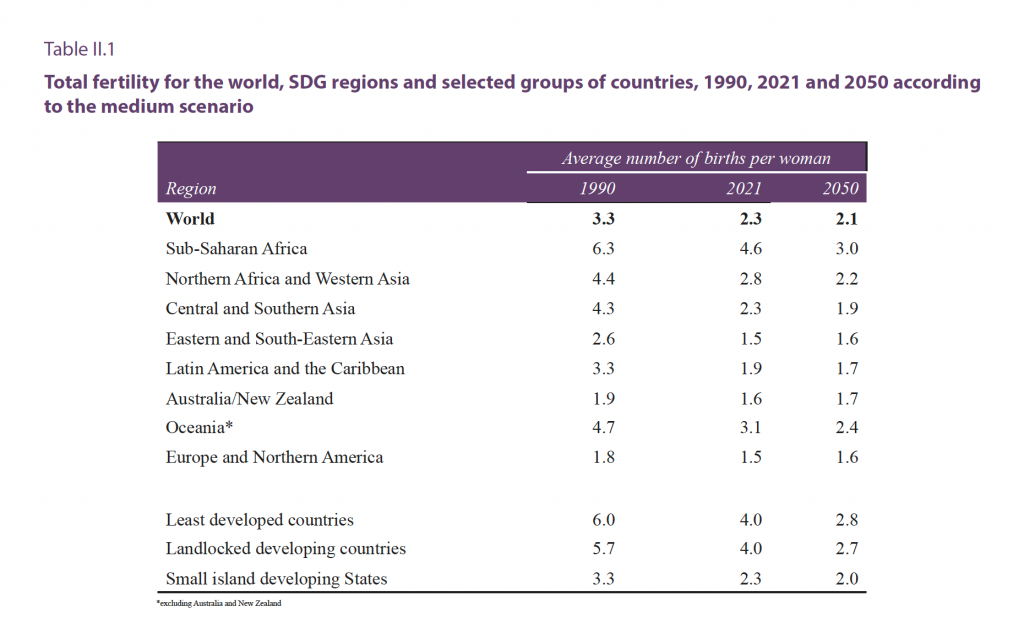Introduction
Dear All
It seems like an eternity since I last contacted you all on behalf of Population Crisis. Please excuse me for not communicating earlier but I have had to contend with a lot of important issues, not least, letting the world catch up with the Population Crisis predictions.
It seems like an eternity since I last contacted you all on behalf of Population Crisis. Please excuse me for not communicating earlier but I have had to contend with a lot of important issues, not least, letting the world catch up with the Population Crisis predictions.
POPULATION CATCH UP
If you wish to catch up with news and views on global population, then I suggest that you look at the following 45minute video. This would probably be the fastest and most efficient way for you of finding out what is happening in the field of global population.
However, I do also suggest two other ways of catching up if you have more time available.
- 1. Look at the Video “There are 8 billion people on Earth, but soon we’ll hit a decline we might never reverse” by ABC News” https://youtu.be/n5DXniZGkME.
- Look at the UN Population graphs at the end of this newsletter.
- Read the United Nations, Department of Economic and Social Affairs “World Population Prospects 2022. (You can download this report from the website www.unpopulation.org).
CURRENT NEWS:
I am now back in India hoping to make another video on topic of “The Inter-relationship between Overpopulation and the Environment”. I have not managed to secure the funding yet for a future documentary film “The last Taboo” so it seems that I am going to have to produce another film on the same topic and then try again.
The film “Inter-relationship between Climate Change and Overpopulation” did receive an award in the Jaipur film festival which is at least something. I could not be in two places at once, so Devesh Panwar, the GUTS fellow director did all the hard work promoting the film out here in Jaipur.
Since then, the world has changed somewhat. The carbon dioxide level in the atmosphere has increased further and the globe is going to miss its target of preventing the world from surpassing the 2 Degree Centigrade upper target above the pre-industrial temperature. As a retired accountant, it does seem surprising and shocking to me that there are so few countries that appear to impose a green tax on fossil fuels and funnel this into research and improvements in mechanisms to reduce CO2 emissions.
The ominous increase in extreme weather events over the last few years means that the human race will now need to accelerate mitigation methods if we are to avert major disasters. In many ways, as a civilization, we have left it far too late especially for countries like Bangladesh.
However, I myself have benefited from such a subsidy for investing in new technology and took the most almighty leap of faith and invested in a new Hyundai Electric Kona vehicle and so far, this car has proved to live up to its reputation.
Besides immediate plans to shoot a new film, we aim to represent Population Crisis at the COP 28 UNFCCC Climate Change Conference in Dubai this September. Hopefully the next film will be ready by then.
Please also read the article written by fellow colleague in Population Crisis, Amit Tiwari on the topic of “The Impact of Overpopulation on Family Finances”.
Population Crisis will continue to do its part.
Best regards and thank you for your support.
David R T Richardson
CEO Population Crisis.
NEWS ON POPULATION
UN POPULATION PROJECTIONS AND POPULATION VIDEO REVIEW.

Many videos have been produced on the topic of Overpopulation since Population Crisis produced its own films. I would like to draw your attention to one such video which ranks well above the others and this is: “There are 8 billion people on Earth, but soon we’ll hit a decline we might never reverse” by ABC News” https://youtu.be/n5DXniZGkME.
Although the film differs from Population Crisis in that it fails to mention many long-term sustainable population levels as solutions to the problem it does throw a lot of light on many issues with regards to current global population as well addressing what is going to happen in the future.
The UN projects that the population of the world will continue to grow to about 9.7 billion by 2050 and then 10.4 billion by 2080 and level off where for a couple of decades before falling. Other research bodies such as the IHME (The Institute for Health Metrics and Evaluation) project that global population could peak much sooner.
In Europe and the US a quarter of the people alive be over 55 by 2050. This has never happened before in human history. In-fact the pyramid of people alive in certain societies could invert. In Japan the number of elderly people is growing so rapidly that the country was facing a financial burden back in 1998 and there simply isn’t enough public services in order to meet everybody’s needs. This was a subject of an interview (see further on) which I had in Keio University, Tokyo.
GOOD NEWS
(1) Democratic Republic of Africa, (2) Nigeria ( has grown by 5.2 million people in one year.) (3) Egypt (4) Ethiopia (5) Tanzania. Rest of the world. (6) Pakistan. (7) India and (8) Philippines.
The 10 most populous countries in 2100 will be;
THE WORLD IS GOING BACKWARDSS
Up to 3 years ago we were winning the battle against poverty. The numbers of people brought out of poverty was increasing. Now this trend is going into reverse.
In future, one third of the world’s humanity will be in the Sub Sahel countries . This is where we find the most impoverished people in the world and where there is also already the most food insecurity. War and Climate change will only exasperate this matter for sub-Saharan states. The numbers of people falling into poverty will only drastically increase unless the world can bring forward immediate important steps in order to stop this from happening.
WHY PEOPLE IN WESTERN SOCIETIES ARE NOT HAVING CHILDREN
In the western world there are increasing numbers of couples who are not having children. For instance, in Australia with a population of 23 million in 2022 there are 3.5 million couples who don’t have children. Many of these peoples are known as “Double Income, No Kids” couples or Dinks. The ABC film on “Overpopulation” carries out a charming series of interviews with women who explain why they are either only have one child or no children at all. This is worth watching.
OTHER FILMS WORTH WATCHING.
Elon Musk brought the topic of population to the forefront of global conversation when he clumsily stated that he thought that there will be a dearth of children in the future. I may be a big fan of Elon when it comes to SpaceX and Tesla but when it comes to talking about population, he is definitely wide of the mark!
If you haven’t already seen this video, “New Rule: Let the Population Collapse | Real Time with Bill Maher (HBO”, I really recommend that you see it. It is absolutely hilarious!)
: https://www.youtube.com/watch?v=HB97iwcm_Qc&t=410s.

Future Event
CLIMATE CHANGE CONFERENCE UAE, DUBAI.
Conference Dates
Thursday, 30 November to Tuesday, 12 December 2023

POPULATION PROJECTIONS DIAGRAMS. (summary diagrams taken from the United Nations, Department of Economic and Social Affairs “World Population Prospects 2022)



Introduction
India’s population, with its impressive diversity and cultural richness, is also accompanied by significant challenges, one of which is overpopulation. In an era where financial stability is crucial for a decent quality of life, the consequences of having more than two children in India have far-reaching implications on family finances. This article explores the intersection between overpopulation and financial crisis, shedding light on the economic factors at play.
The Economic Burden of Overpopulation:
1. Increased Household Expenditures:
With each new addition to the family, household expenditures rise substantially. Costs associated with education, healthcare, nutrition, clothing, and housing multiply, often outstripping the ability of families to provide adequately for each member.
2. Education Struggles:
Providing a quality education for children is a significant financial commitment. As families expand, ensuring every child’s access to education becomes progressively challenging. Limited resources may force families to compromise on the quality of education, limiting the potential for socio-economic mobility.
3. Healthcare Costs:
The cost of healthcare is a major concern, particularly in a country where medical expenses can be significant. More children mean higher healthcare expenses, including vaccinations, routine check-ups, and unforeseen medical emergencies.
4. Impact on Savings and Retirement Planning:
Overpopulation can jeopardize parents’ ability to save for the future. With each child, the capacity to save for retirement diminishes, potentially leaving parents financially vulnerable during their later years.
5. Unemployment and Job Market Pressure: :
The growing population intensifies competition in the job market, making it harder for parents to secure stable employment. As more individuals enter the workforce, the potential for unemployment or underemployment rises, hampering income stability.
Stunning News: Global population could peak at 9.7 billion by 2063.
